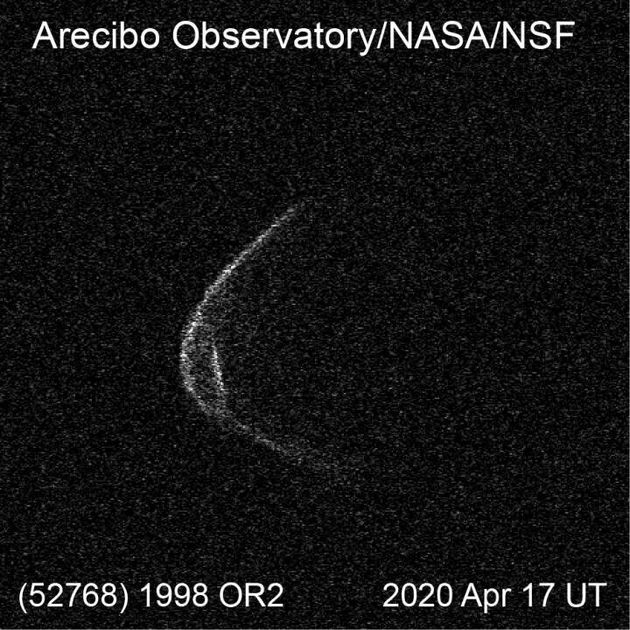Scientists are joking that even an asteroid set to pass by Earth is exercising caution as the planet tackles the coronavirus pandemic.
The 1998 OR2 asteroid poses no risk to the Earth, but its appearance makes it look as though it were aware of the risks on the planet right now, according to researchers at the Arecibo Observatory in Puerto Rico, who quipped that its shape resembles a face mask.
“The small-scale topographic features such as hills and ridges on one end of asteroid 1998 OR2 are fascinating scientifically,” says Anne Virkki, head of Planetary Radar at the observatory, according to a press release.
“But since we are all thinking about Covid-19 these features make it look like 1998 OR2 remembered to wear a mask.”
The asteroid is classified as a “Potentially Hazardous Object (PHO),” which means it’s more than 500 feet in diameter and will come within 5 million miles of Earth’s orbit. Researchers estimate this asteroid is roughly 1.2 miles across in size and will still be 16 times farther than the distance to the moon when it comes closest to Earth.

A team of experts at Arecibo Observatory monitors these and other types of near-Earth asteroids, and use their observations to predict the trajectories of future PHOs.
The University of Central Florida, which manages the National Science Foundation facility, teased on Twitter that the asteroid “appears to know our planet is facing a pandemic.”
While the asteroid poses no immediate danger to Earth, researchers say it will approach closer to the planet next time it passes by. It’s key, therefore, to study these types of objects in order to improve risk mitigation technologies, they said.
“In 2079, asteroid 1998 OR2 will pass Earth about 3.5 times closer than it will this year, so it is important to know its orbit precisely,” said Flaviane Venditti, a research scientist at the observatory.
The asteroid will make its closest approach to Earth on April 29.